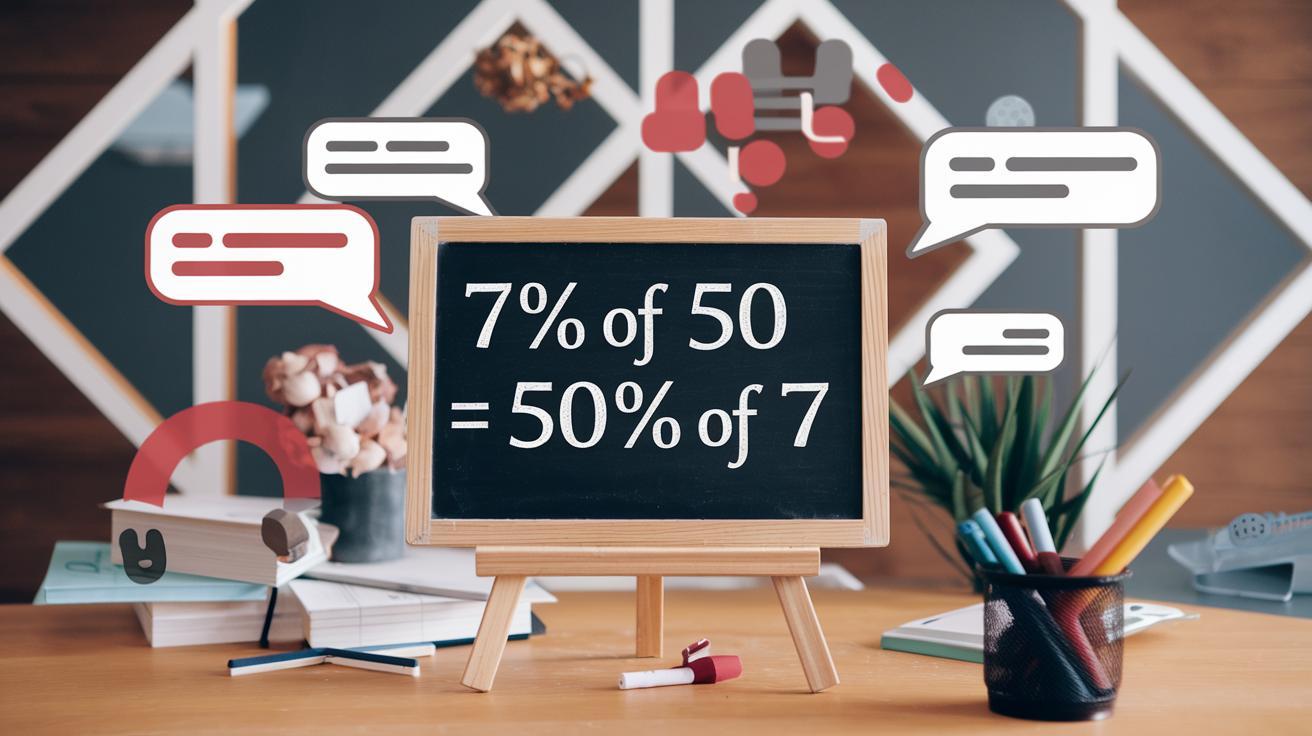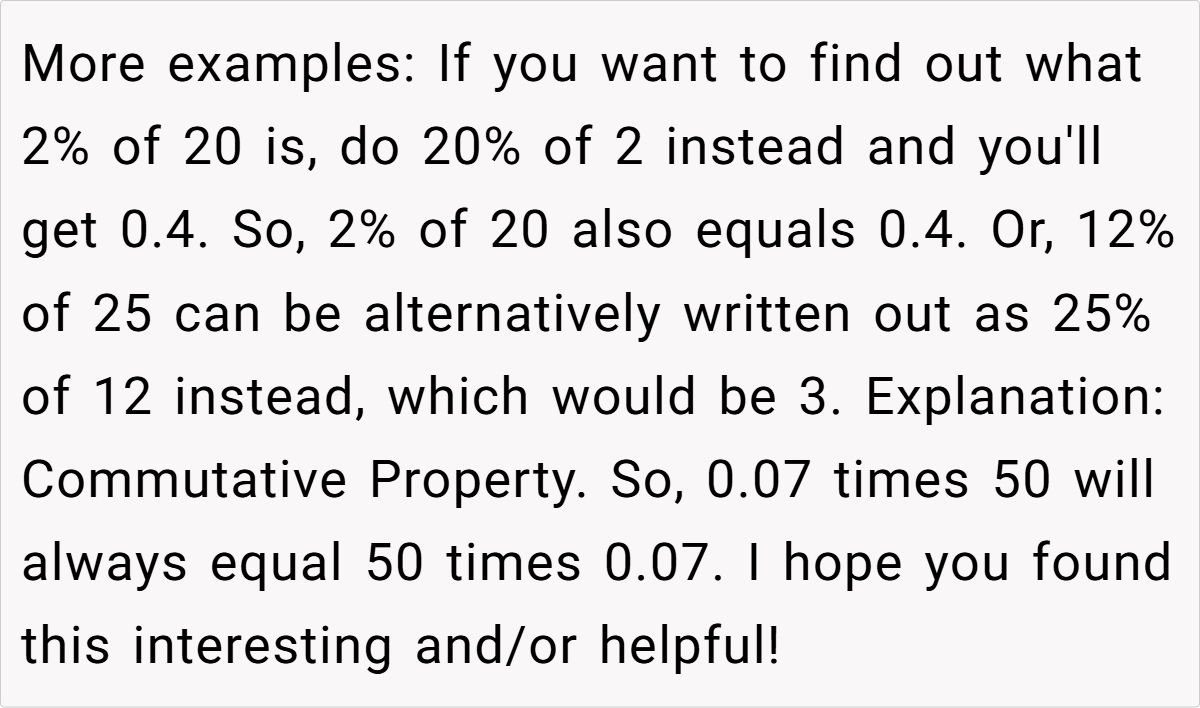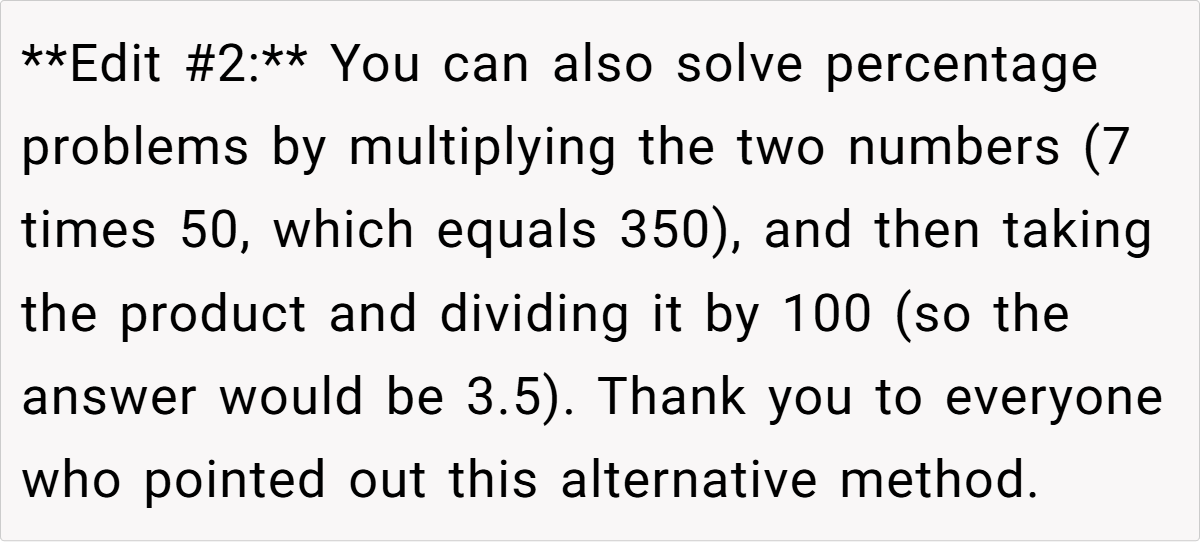Mathematical Magic: How a Tiny Twist Simplifies Percentage Problems
Have you ever come across a math trick that makes you smile because of its sheer simplicity? Imagine discovering that 7% of 50 is the same as 50% of 7—an unexpected shortcut that instantly demystifies percentage calculations. This neat observation isn’t just a parlor trick; it’s a direct consequence of the commutative property of multiplication, reminding us that sometimes, numbers can be as playful as they are precise.
In today’s post, we delve into this clever insight and explore how swapping percentages can simplify everyday math problems. Whether you’re calculating discounts or simply curious about numerical quirks, this trick transforms a potentially daunting calculation into an elegant, accessible solution. Let’s uncover the story behind this idea and see why it resonates with so many.

‘LPT: X percent of Y is equal to Y percent of X. So, if you want to find out what 7% of 50 is, you could instead find out what 50% of 7 is, which is 3.5. This means that 7% of 50 is also equal to 3.5.’



This clever trick reveals the beauty of mathematics in everyday life. The idea that 7% of 50 equals 50% of 7 is a straightforward application of the commutative property, which tells us that the order of multiplication does not affect the result. Such insights remind us that sometimes, reordering our approach can lead to simpler, more intuitive solutions.
Analyzing the OP’s situation, we see a refreshing example of how basic mathematical principles can demystify everyday calculations. The original post breaks down the concept with clear examples—whether it’s 2% of 20 equating to 20% of 2 or 12% of 25 matching 25% of 12. This demonstration not only simplifies mental math but also encourages us to reframe problems in a way that makes the solution instantly apparent. It’s a small twist in perspective that offers big rewards in clarity.
Broadening the issue, this trick is more than just a neat arithmetic shortcut—it’s a testament to the elegance of mathematical thinking. In a world where many people find percentages intimidating, approaches like these can make math feel accessible and even enjoyable.
Studies in mathematical education often show that when learners see familiar rules applied in unexpected ways, it boosts both confidence and curiosity about the subject. For example, everyday applications of percentages in financial decisions or sports analytics reveal how fundamental properties, like commutativity, consistently underpin our calculations.
As Dr. Eugenia Cheng once remarked, “The elegance of mathematics lies in its ability to reveal hidden symmetries in everyday problems, transforming what seems complex into something beautifully simple.” This insight perfectly applies to our discussion: by simply switching the order of the numbers, a seemingly tricky problem becomes straightforward. Dr. Cheng’s perspective encourages us to look at problems from different angles, reminding us that sometimes the simplest route is the most effective.
If you’re looking to incorporate this trick into your daily calculations, consider practicing with a variety of numbers. Experimenting with different pairs can help cement the idea that the commutative property is a reliable friend in the world of arithmetic.
Moreover, understanding such principles deepens our appreciation for mathematics overall—making it less about rote computation and more about creative problem-solving. Embracing these insights not only enhances your numerical skills but also invites you to see everyday math in a new, engaging light.
Here’s how people reacted to the post:
Here are some hot takes from the Reddit community—candid, humorous, and refreshingly unfiltered.










These popular opinions illustrate that while some users simply enjoy the quick mental math trick, others find it a delightful revelation that reshapes their approach to percentages. Do these reactions reflect a broader appreciation for simple math hacks, or are they just clever wordplay? The conversation continues, inviting more voices to weigh in.
In conclusion, this simple yet ingenious trick not only simplifies percentage calculations but also serves as a reminder of the inherent beauty in mathematical symmetries. We’d love to hear your thoughts—what would you do if you discovered similar shortcuts in everyday problems? Share your opinions, experiences, and even your own math hacks in the comments below. Let’s continue the discussion and celebrate the unexpected charm of numbers!

